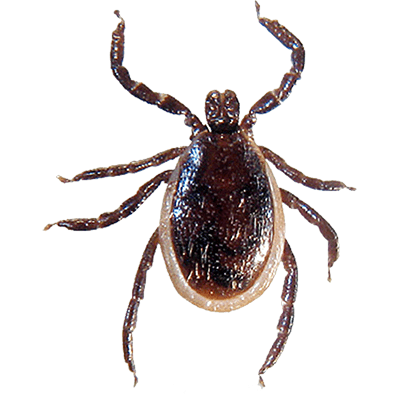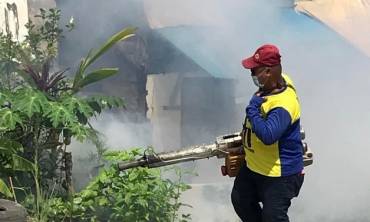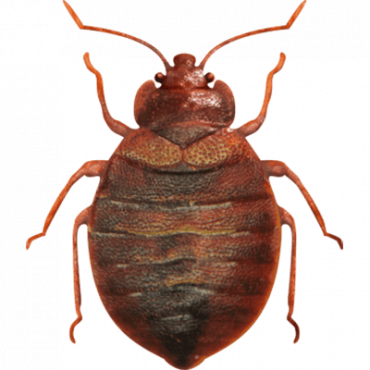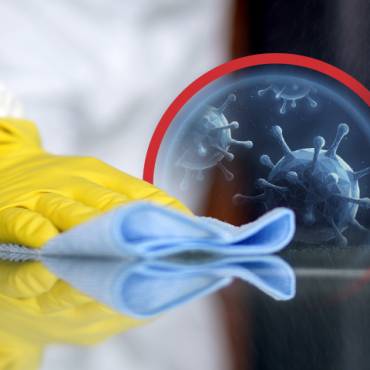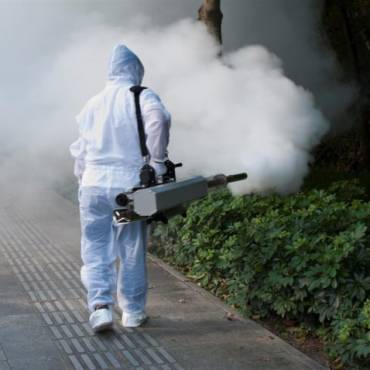Ticks Pest Control Services
Pest Control, fumigation and extermination services for Ticks in Nairobi, Kiambu, Machakos, Thika, Nakuru, Kajiado, Narok, Eldoret, Mombasa and the all accross Kenya. Top standard pest control services areavailable for homes, offices, schools and learning institutions, commercial installments like factories and warehouses, agricultural farmlands, and gardens. You can also get garden treatment solutions.
Tick Control
The main reasons for tick control are to protect hosts from irritation and production losses, formation of lesions that can become secondarily infested, damage to hides and udders, toxicosis, paralysis, and of greatest importance, infection with a wide variety of disease agents. Control also prevents the spread of tick species and the diseases they transmit to unaffected areas, regions, or continents.
Cultural and Biologic Control of Ticks
These measures can be directed against both the free-living and parasitic stages of ticks. The free-living stages of most tick species, both ixodid and argasid, have specific requirements in terms of microclimate and are restricted to particular microhabitats within the ecosystems inhabited by their hosts. Destruction of these microhabitats reduces the abundance of ticks. Alteration of the environment by removal of certain types of vegetation has been used in the control of Amblyomma americanum in recreational areas in southeastern USA and in the control of Ixodes rubicundus in South Africa. Control of argasid ticks such as Argas persicus and A walkerae in poultry can be achieved by eliminating cracks in walls and perches, which provide shelter to the free-living stages.
The abundance of tick species can also be reduced by removal of alternative hosts or hosts of a particular stage of the life cycle. This approach has occasionally been advocated for control of three-host ixodid ticks such as Rhipicephalus appendiculatus, Amblyomma hebraeum, and Ixodes rubicundus in Africa, and Hyalomma spp in southeastern Europe and Asia.
Rotation of pastures or pasture spelling has been used in control of the one-host ixodid tick Rhipicephalus (Boophilus) microplus in Australia. The method could also be applied to other one-host ticks, in which the duration of the spelling period is determined by the relatively short life span of the free-living larvae. However, it has minimal application to multihost ixodid ticks or argasid ticks because of the long survival periods of the unfed nymphs and adults.
Predators, including birds, rodents, shrews, ants, and spiders, play a role in some areas in reducing the numbers of free-living ticks. In the New World, fire ants (Pheidole megacephala) are noteworthy tick predators. Engorged ticks may also become parasitized by the larvae of some wasps (Hymenoptera), but these have not significantly reduced tick populations.
Zebu (Bos indicus) and Sanga (a B taurus, B indicus crossbreed) cattle, the indigenous breeds of Asia and Africa, usually become very resistant to ixodid ticks after initial exposure. In contrast, European (B taurus) breeds usually remain fairly susceptible. The tick resistance of Zebu breeds and their crosses is being increasingly exploited as a means of control of the parasitic stages. The introduction of Zebu cattle to Australia has revolutionized the control of R microplus on that continent. Use of resistant cattle as a means of tick control is also becoming important in Africa and the Americas. In Africa, infestations of ixodid ticks on livestock and wild ungulates may also be reduced by oxpeckers (Buphagus spp), which are birds that feed on attached ticks.
Chemical Control of Ticks
Control of ticks with acaricides may be directed against the free-living stages in the environment or against the parasitic stages on hosts. Control of ixodid ticks by acaricide treatment of vegetation has been done in specific sites (eg, along trails) in recreational areas in the USA and elsewhere, to reduce the risk of tick attachment to people. This method has not been recommended for wider use because of environmental pollution and the cost of treatment of large areas. Dog kennels, barns, and human dwellings may also require periodic treatment with acaricides to control the free-living stages of ixodid ticks such as the kennel tick, Rhipicephalus sanguineus.
The free-living stages of argasid ticks, which infest specific foci such as fowl runs, pigeon lofts, pig sties, and human dwellings, are more frequently and more effectively treated with acaricides.
Treatment of hosts with acaricides to kill attached larvae, nymphs, and adults of ixodid ticks and larvae of argasid ticks has been the most widely used control method. A variety of ectoparasiticide products are available on the market to treat animals against ticks. Some ectoparasiticides are applied as sprays, dips/washes, spot-on treatments, or impregnated tugs and collars and distributed cutaneously—on the skin surface. Others are administered orally and distributed systemically by the blood circulation. In general, ticks must attach to an animal and acquire a blood meal for the blood-distributed ectoparasiticides to be effective. Alternatively, cutaneously distributed ectoparasiticides have a potential to both kill the attached ticks and prevent the attachment of new ones.
Pyrethroids, including fipronil, permethrin, and permethrin combination products, are effective ectoparasiticides because of rapid penetration of arthropod cuticle and high accumulation in arthropod tissues. However, topically applied cutaneous ectoparasiticides may not achieve a uniform distribution, with some body parts not being covered to the same extent and concentration (eg, hind legs vs. the back). This may be due to the distance from the original application site as well as by greater comparative loss of active ingredient from the legs because of routine life activities. Pyrethroids are safe and effective in dogs; however, they are toxic to cats and fish. Systemically distributed ectoparasiticides, including afoxolaner, fluralaner, and sarolaner, tend to achieve more uniform distribution throughout the animal body and extremities but may take longer to reach the full efficacy and have somewhat lower speed of kill.
Vaccines Against Ticks in Animals
An advance of potentially great importance has been the production, using biotechnology, of a promising vaccine against R microplus. The immunizing agent is a concealed tick antigen, not normally encountered by the host. The immune mechanism it stimulates is different from that stimulated by exposure to ticks (ie, tick feeding). The antigen was derived from a crude extract of partially engorged adult female ticks. It stimulates the production of an antibody that damages tick gut cells and kills the ticks or drastically reduces their reproductive potential.
Prospects of developing similar vaccines against other ixodid tick vectors of cattle diseases of major veterinary importance are not clear. Rhipicephalus ticks are good candidates for such vaccines in that they are one-host ticks and show a marked preference for bovine hosts, which act as the principal reservoir of perhaps the most important group of disease agents (Babesia spp) these ticks transmit. By contrast, most other tick vector species of agents that cause important cattle diseases (eg, anaplasmosis, heartwater, theileriosis) are three-host ticks, which infest not only cattle but also wild ungulate species, for which vaccination is not feasible. Moreover, many wild ungulate hosts of the vector ticks serve as reservoirs of these disease agents. For these reasons, vaccines against nonboophilid vector ticks may be unable either to eradicate the ticks or to eliminate important sources of the disease agents they transmit.
Control Strategies for Ticks
Initially, the main uses of acaricides were for tick eradication, prevention of spread of ticks and tickborne diseases (quarantine), and eradication and control of tickborne diseases. The eradication programs were successful in some ecologically marginal subtropical areas, such as southern USA and central Argentina where Rhipicephalus spp and babesiosis were eradicated, and southern Africa where East Coast fever (caused by Theileria parva parva) was eradicated. The programs were less successful in the ecologically more favorable tropical areas of northeastern Australia, Central America, the Caribbean Islands, and East Africa.
In the areas where eradication was not achieved, costs of maintaining intensive tick control programs often have become prohibitive. For this reason, integrated biologic and chemical control strategies are being adopted. The effectiveness of these cost-containment strategies requires better knowledge of the dynamic associations among the disease agents, their vertebrate hosts, the tick vectors, and the environment. Strict quarantine measures to prevent reintroductions are enforced in countries from which ticks and tickborne diseases have been eradicated. Climate-matching models, geographic information systems, and expert systems (models based on expert knowledge and artificial intelligence) are being used to identify unaffected areas in which tick pests could become established if introduced.
Control of these diseases will require use of the principles of endemic stability and development of improved recombinant vaccines. A current, promising strategy is the identification of receptor sites on the midgut of vector ticks and the development of antibodies that bind with these sites, thereby blocking tick-ingested tickborne pathogens from infecting the tick. Cattle injected with receptor-site antigens may produce antibodies that feeding ticks ingest.
Call 0722466901 for Tick Control Services in Nairobi, Kenya
Commercial Pest Control in Nairobi
Commercial pest control is a very important aspect for every business that intends to maintain high levels of production quality and public safety...
Construction Pest Control in Kenya
We offer Construction Pest Control Services in Nairobi and the rest of Kenya for cocroaches, rats, mice, flies, fleas, snakes, lizards andother...
Residential and Commercial Pest Control Services in Nairobi Kenya
- Commercial Pest Control Services in Nairobi Kenya
- Construction Pest control servies in Nairobi Kenya
- Domestic & Residential Pest Control Services in Nairobi Kenya
- Pest control services by disinfection
- Pest Control By Fumigation
- Wasps Pest Control in Nairobi Kenya
- Ticks Pest Control in Nairobi Kenya
- Spiders Pest Control in Nairobi Kenya
- Snakes Pest Control in Nairobi Kenya
- Rodents Pest Control in Nairobi Kenya
- Rats Pest Control in Nairobi Kenya
- Moths Pest Control in Nairobi Kenya
- Mosquito Pest Control in Nairobi Kenya
- Mice / Mouse Pest Control in Nairobi Kenya
- Flies Pest Control in Nairobi Kenya
- Fleas Pest Control in Nairobi Kenya
- Cocroaches Pest Control in Nairobi Kenya
- Birds Pest Control in Nairobi Kenya
- Bees Pest Control in Nairobi Kenya
- Insect Pest Control in Nairobi Kenya
- Rodents Pest Control in Nairobi Kenya

